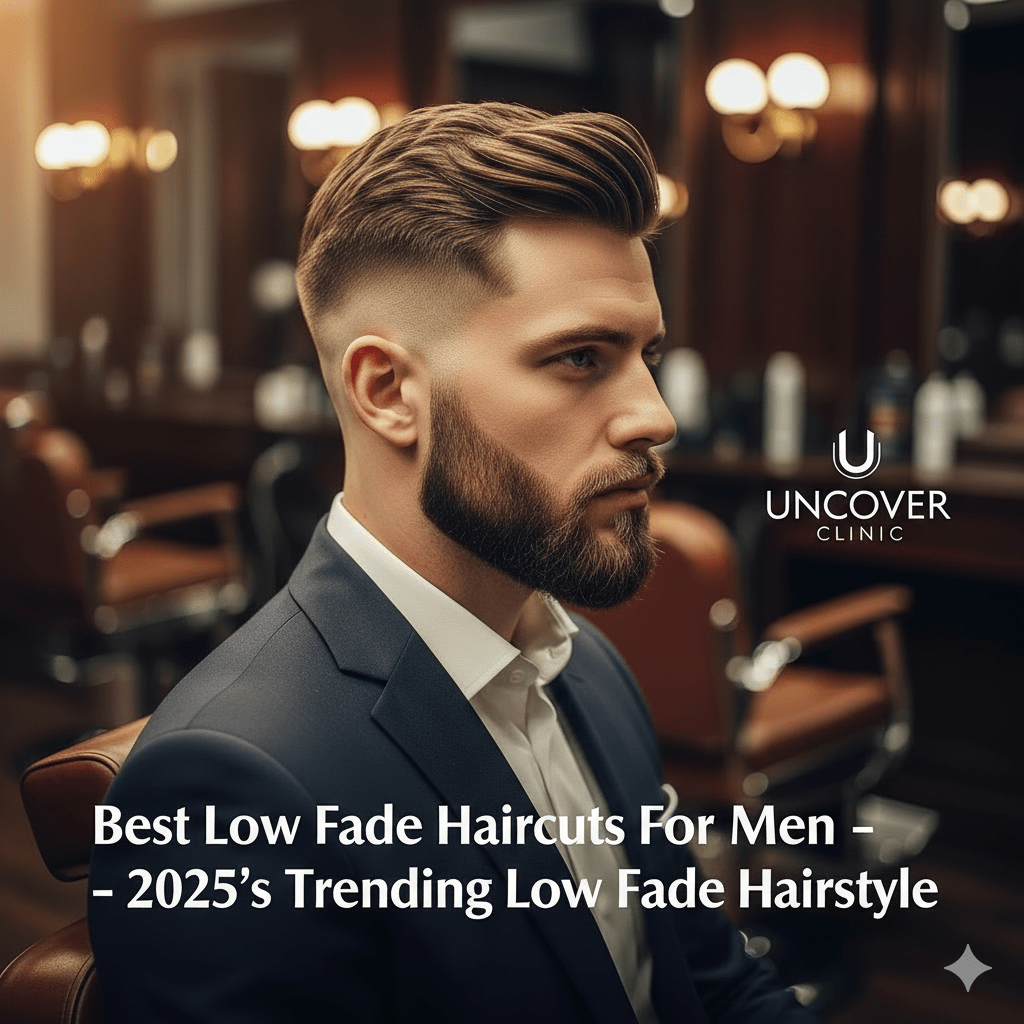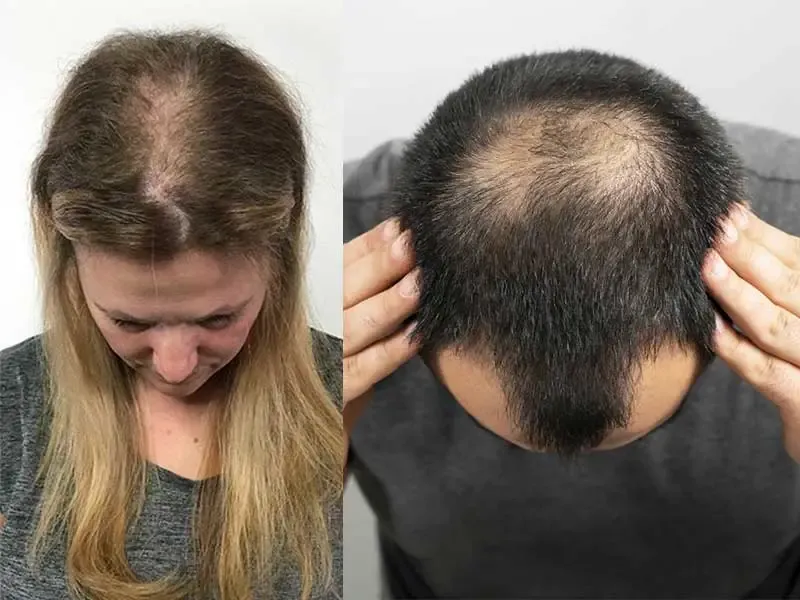The low fade haircut is a stylish and versatile option for men, adaptable to different hair types, textures, and occasions, offering a sleek professional look or a trendy modern vibe.
What is a Low Fade Haircut?
A low fade haircut is a cut where the hair gradually shortens from the sides and back, starting just above the ears. This transition line is what defines the "low" aspect, as the length is preserved lower on the head compared to a mid or high fade. The fade then moves down to a very short length or even the skin (skin fade) at the nape and around the earline. This gradual reduction in length creates a sharp contrast between the short sides and the longer hair on top, while maintaining a clean and polished appearance around the temples and neckline.
Benefits of Low Fade Haircuts
- Enhances Facial Features: By keeping the fade low, attention is subtly drawn upward towards the facial structure and the longer hair on top, helping to frame the face for a sharp, defined look without being overly aggressive.
- Works with All Hair Types: The low fade is universally flattering. Whether you have straight, wavy, or tightly coiled hair, the clean transition on the sides complements the natural texture of the hair on top seamlessly.
- Ideal for All Occasions: Due to its subtle nature, the low fade is highly versatile. It's clean enough for professional settings like offices and formal events, yet modern enough for casual outings.
- Customizable & Adaptable: This fade acts as a clean canvas. It can be paired with almost any top style, from a classic side part or a structured quiff to a voluminous pompadour.
- Easy to Maintain: While the fade requires regular trims (every 2–4 weeks) to stay sharp, the daily styling effort is typically focused only on the longer hair on top, requiring minimal time for a fresh look.
Best Low Fade Hairstyles
- Classic Low Fade Haircut

A timeless style where the fade starts just above the ear and blends seamlessly into the longer hair on top. It suits all face shapes and hair types. Maintenance is minimal, making it ideal for professionals and casual settings.
- Low Taper Fade Haircut
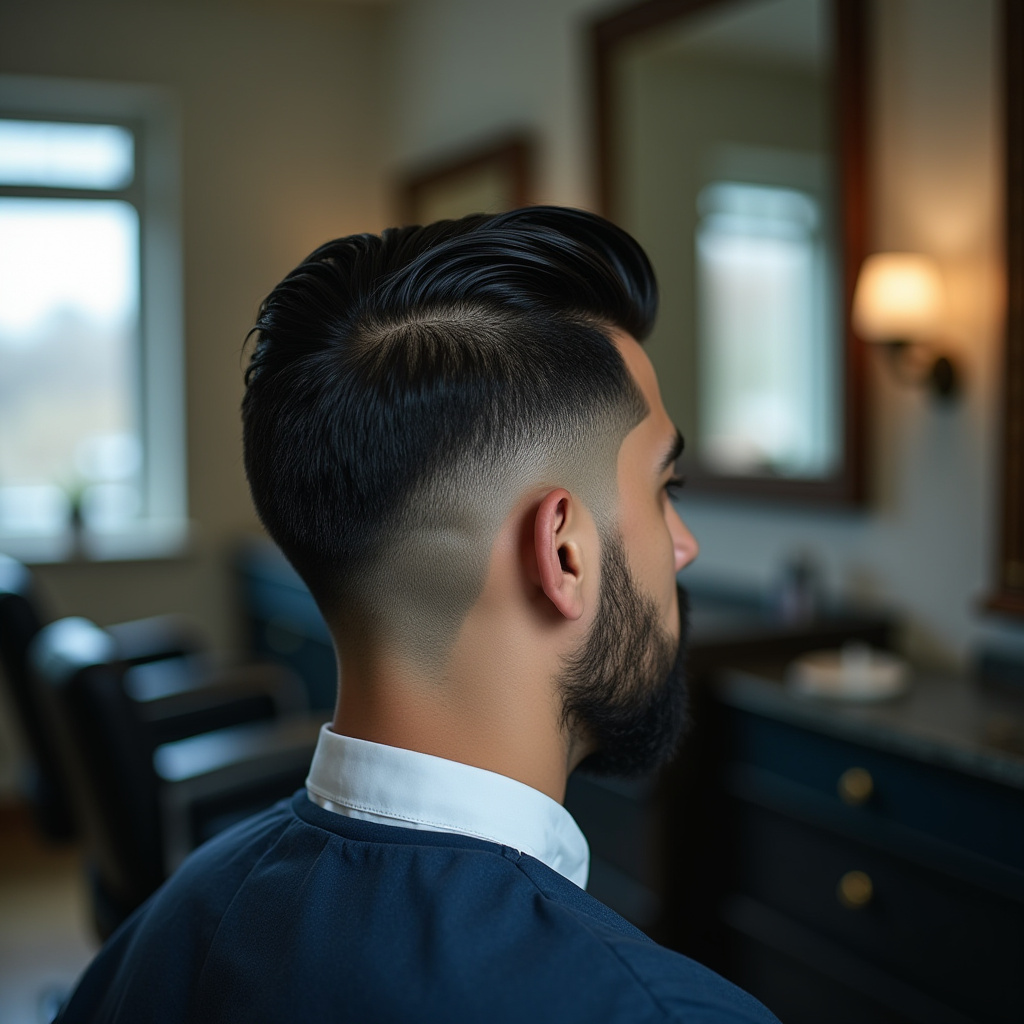
A gradual fade at the neckline and sideburns that gives a polished, natural look. Works best for straight and wavy hair. Easy to maintain, requiring occasional trims. Suitable for corporate and casual events.
- Low Skin Fade Haircut
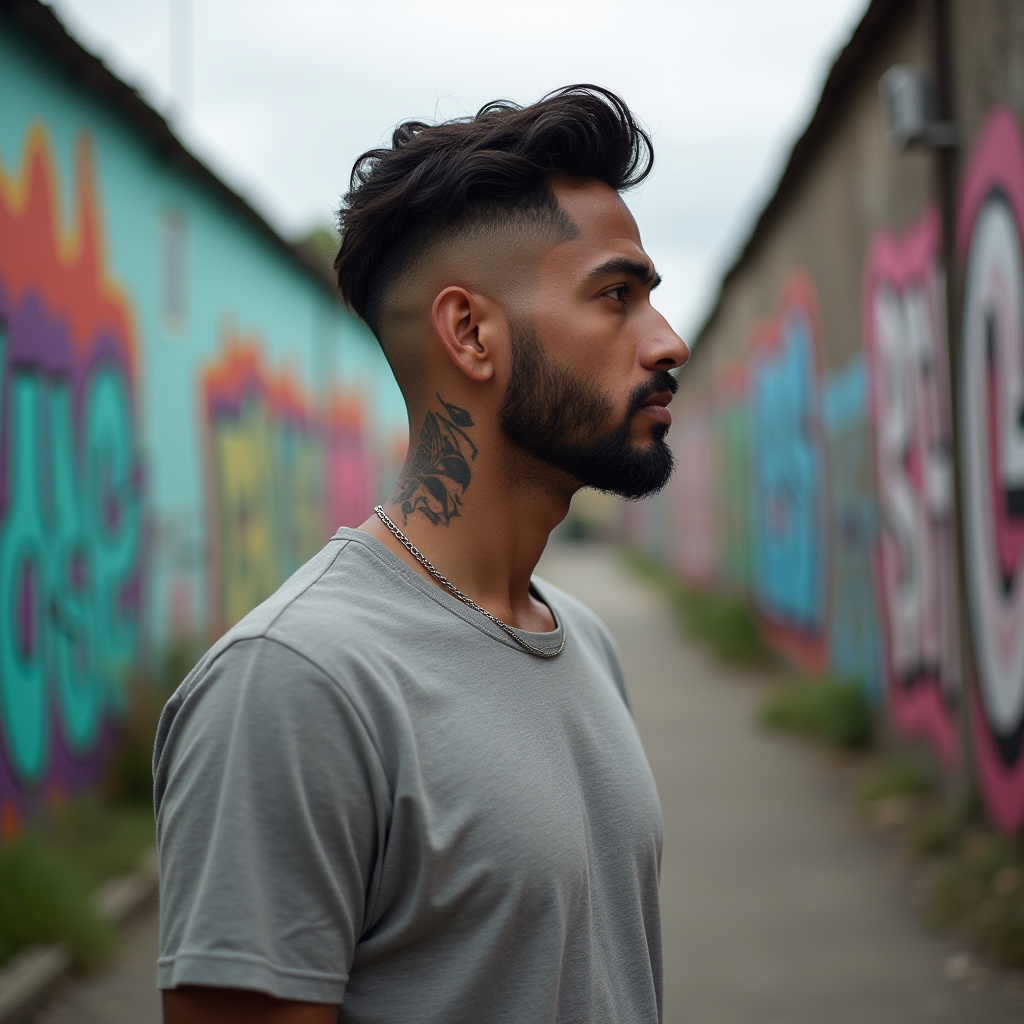
A bold style that fades down to the skin, creating sharp contrast. Best for oval and square face shapes. High maintenance, requiring frequent trims. Perfect for modern and edgy looks.
- Low Drop Fade Haircut

A fade that follows the natural curve of the head, dropping lower at the back. Suitable for all hair types. Low maintenance with a clean, stylish finish. Ideal for casual and trendy occasions.
- Low Fade Haircut with Textured Top
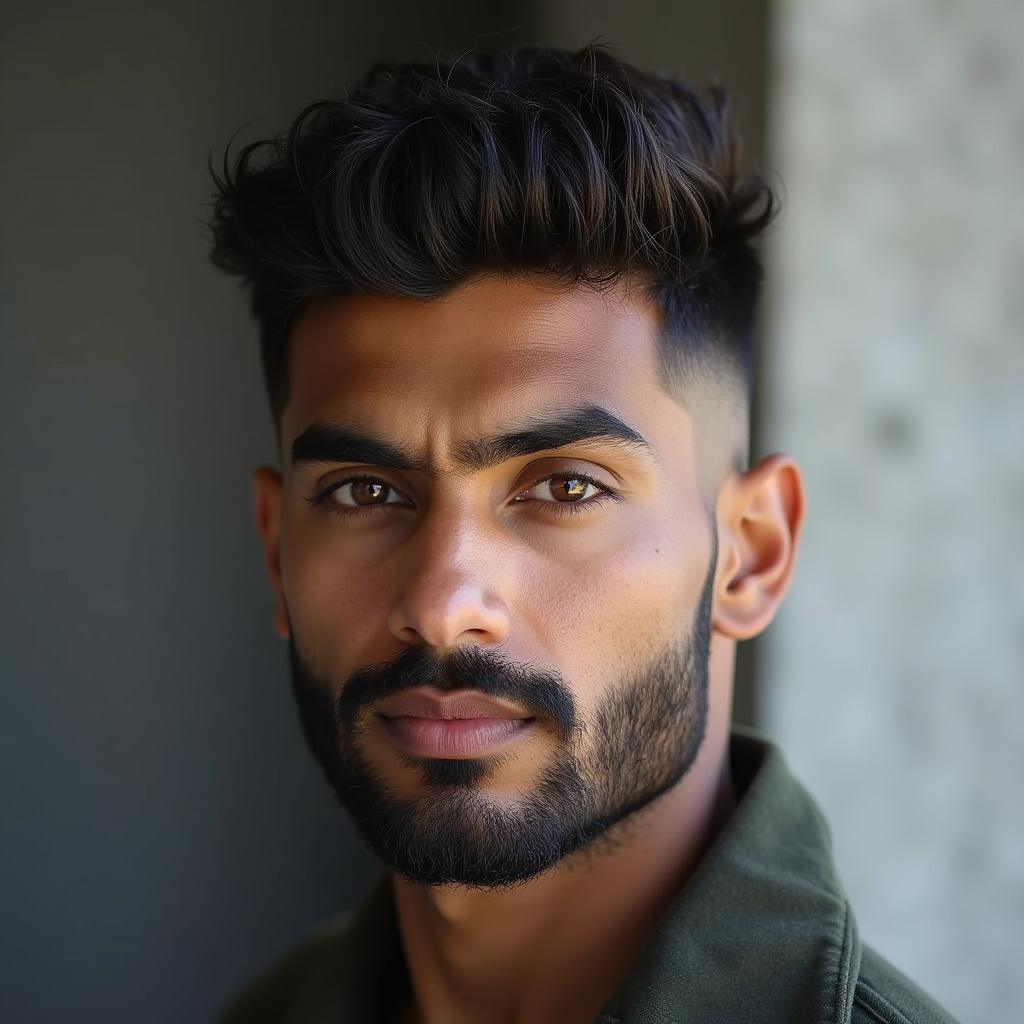
Enhances volume and movement. Best for wavy and curly hair. Medium maintenance, requiring light styling. Ideal for modern, casual, and youthful looks.
- Low Bald Fade Haircut
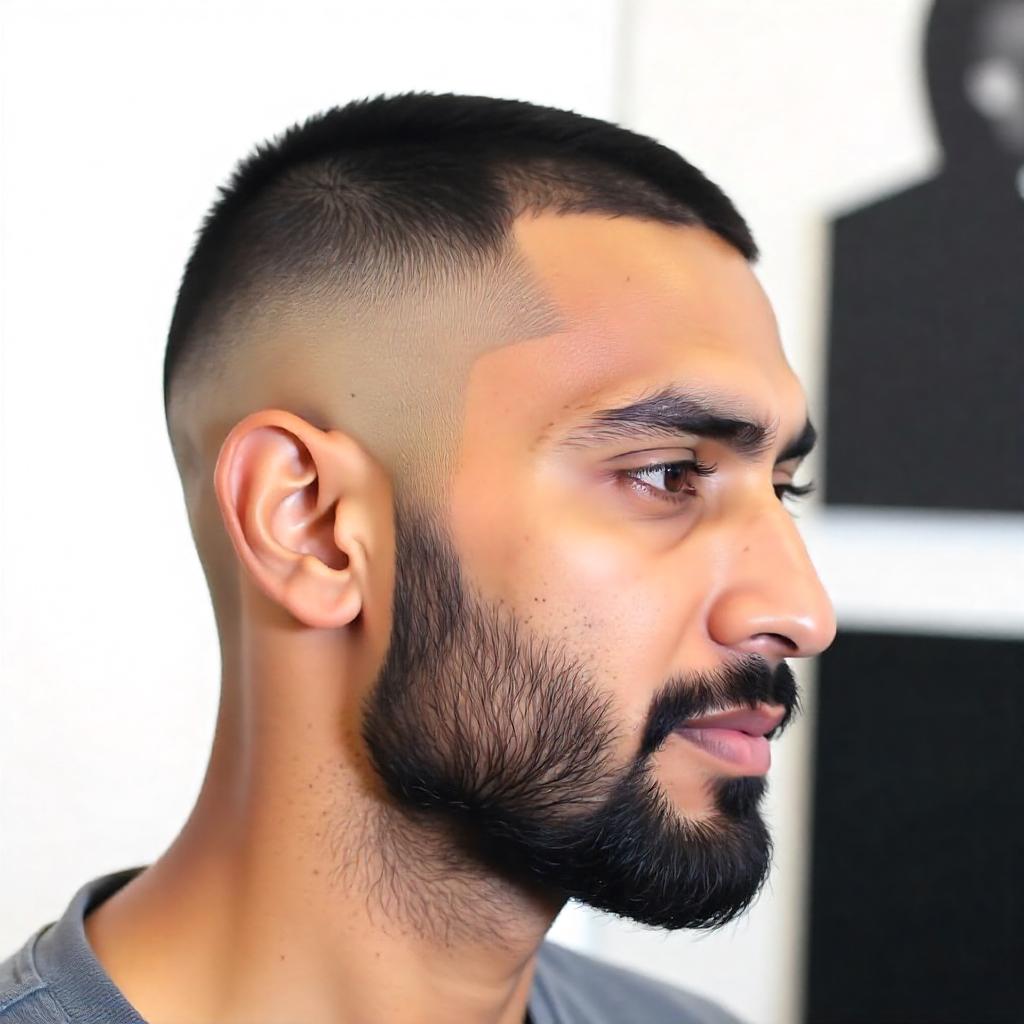
A clean, skin-tight fade that enhances facial structure. Works best for straight and wavy hair. High maintenance, needing regular touch-ups. Great for formal and edgy styles.
- Low Fade with Curly Hair
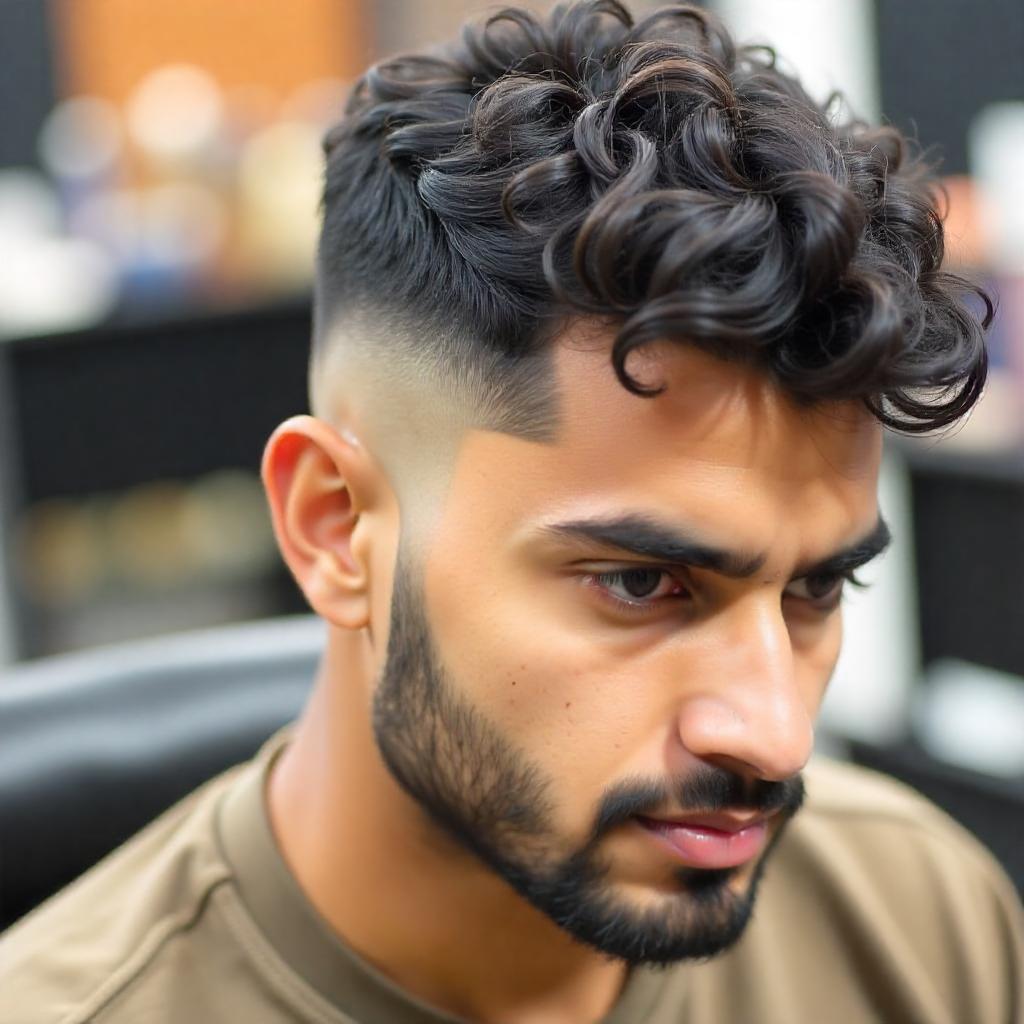
Enhances natural curls while keeping the sides neat. Best for round and oval faces. Requires hydration and curl-enhancing products. Ideal for casual and stylish looks.
- Low Fade with Comb Over
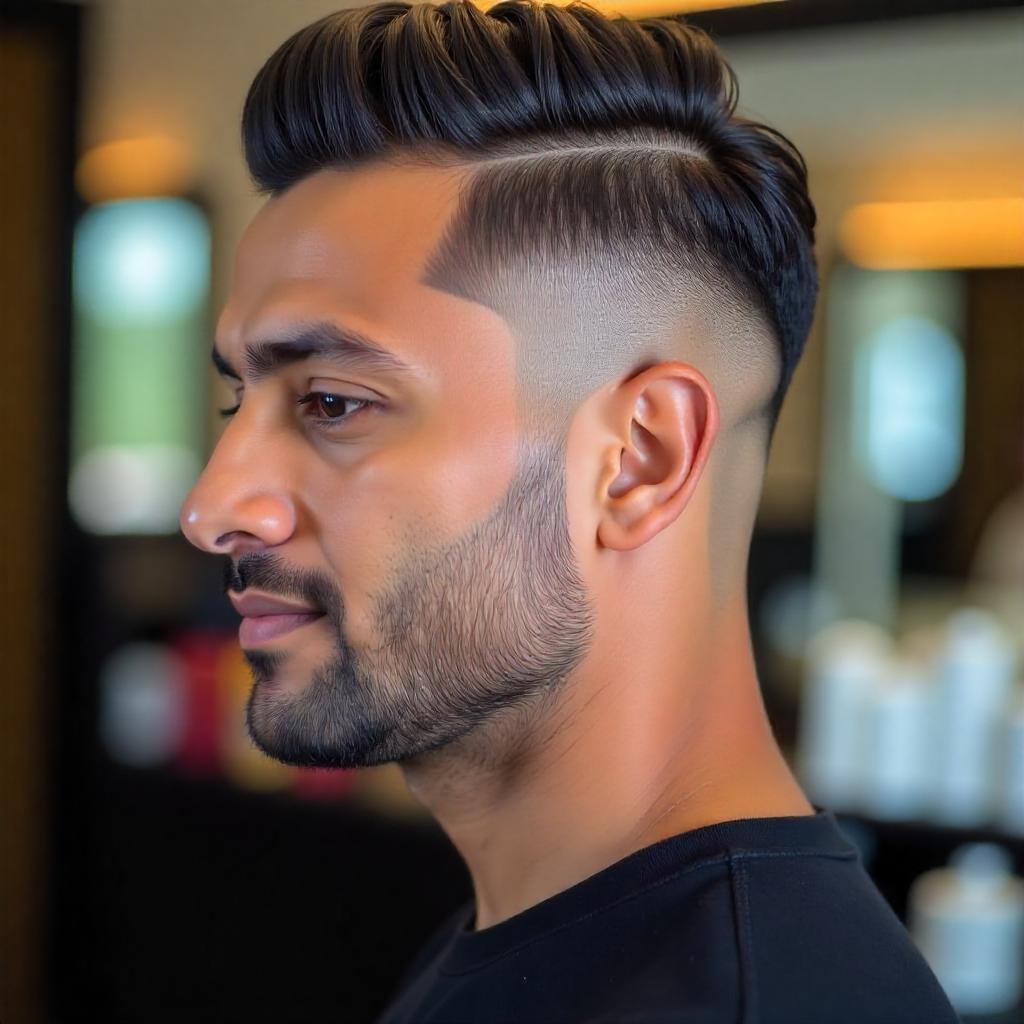
A sleek, polished style with a deep side part. Best for oval and square faces. Medium maintenance with styling products. Ideal for business and formal occasions.
- Sharp Low Fade with Beard Styles for Men
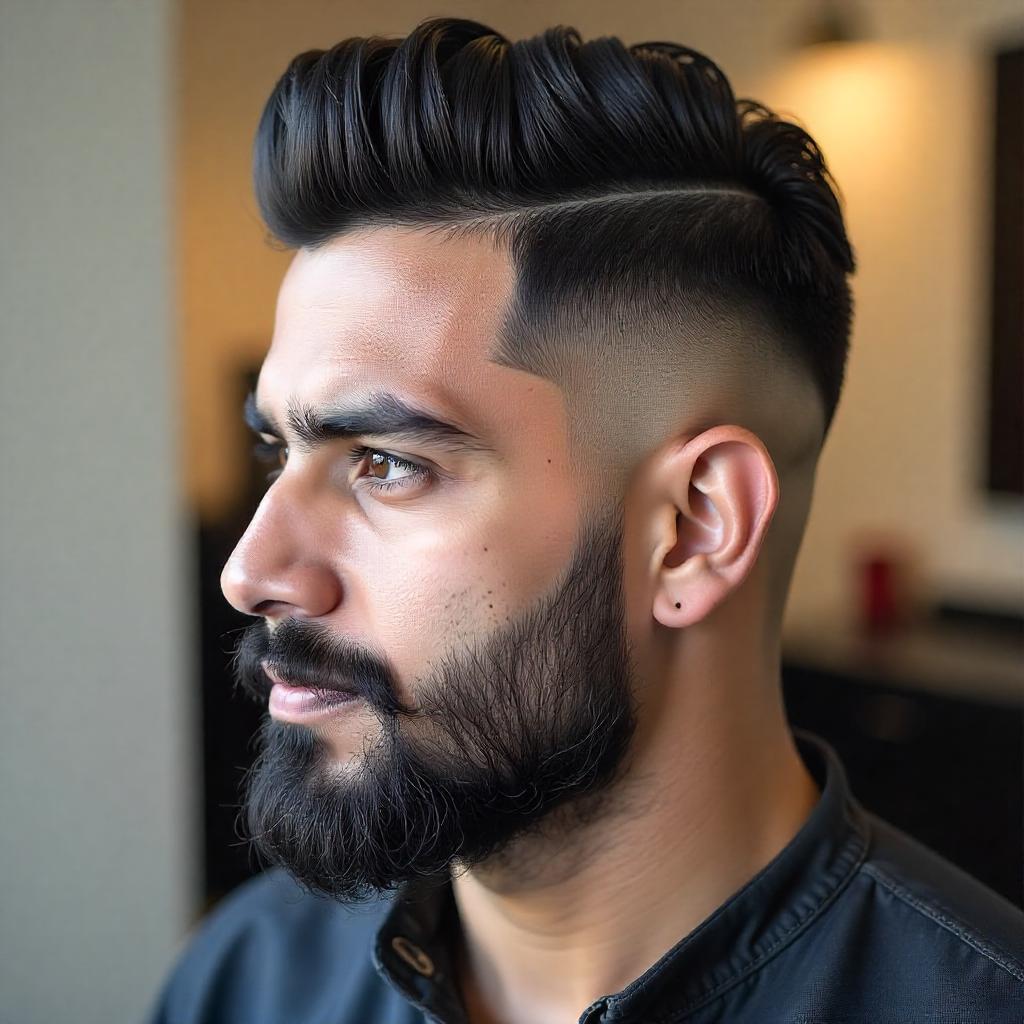
Creates a balanced look with a sharp fade and well-groomed beard. Best for square and oval faces. Medium maintenance with regular beard trimming. Ideal for both casual and formal settings.
- Low Fade with Straight Hair
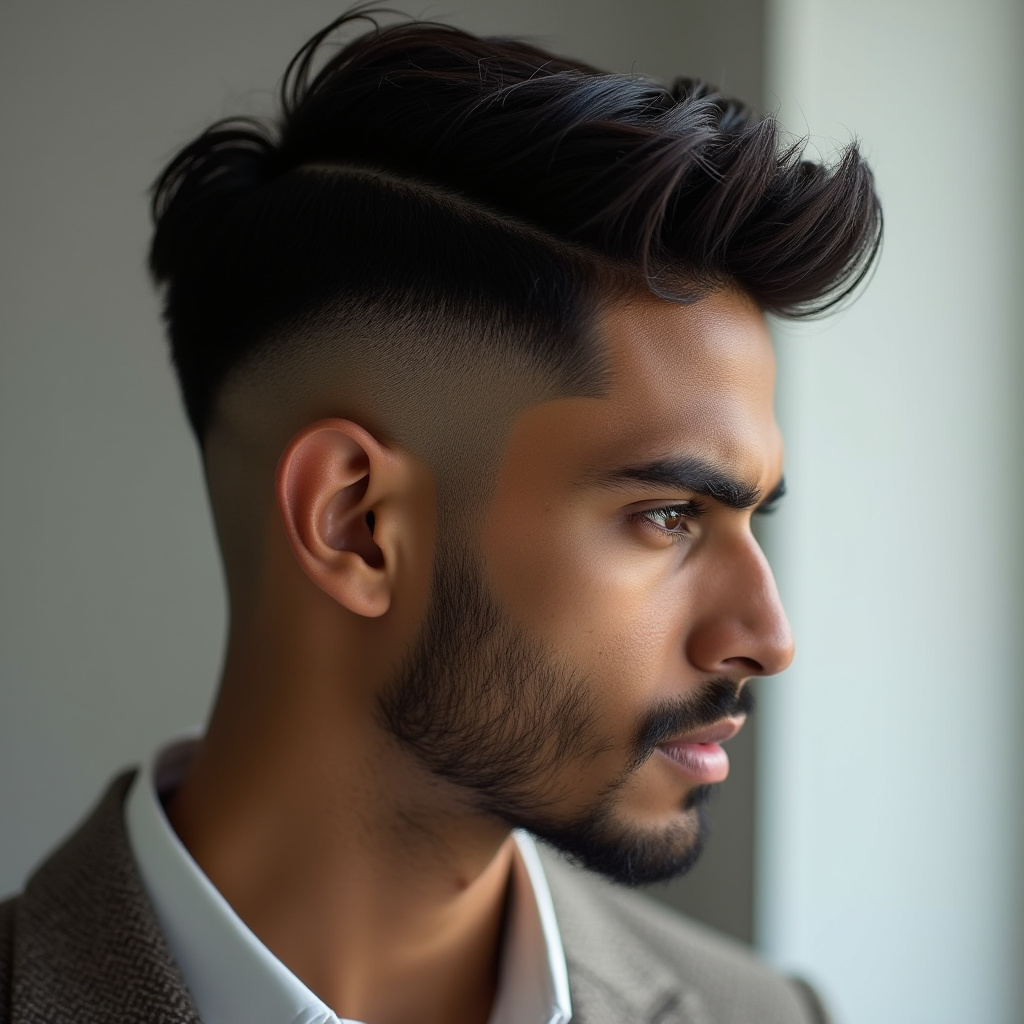
Gives a sleek and polished appearance. Best for men with fine to medium hair. Low maintenance and perfect for professional looks.
- Low Fade with Wavy Hair
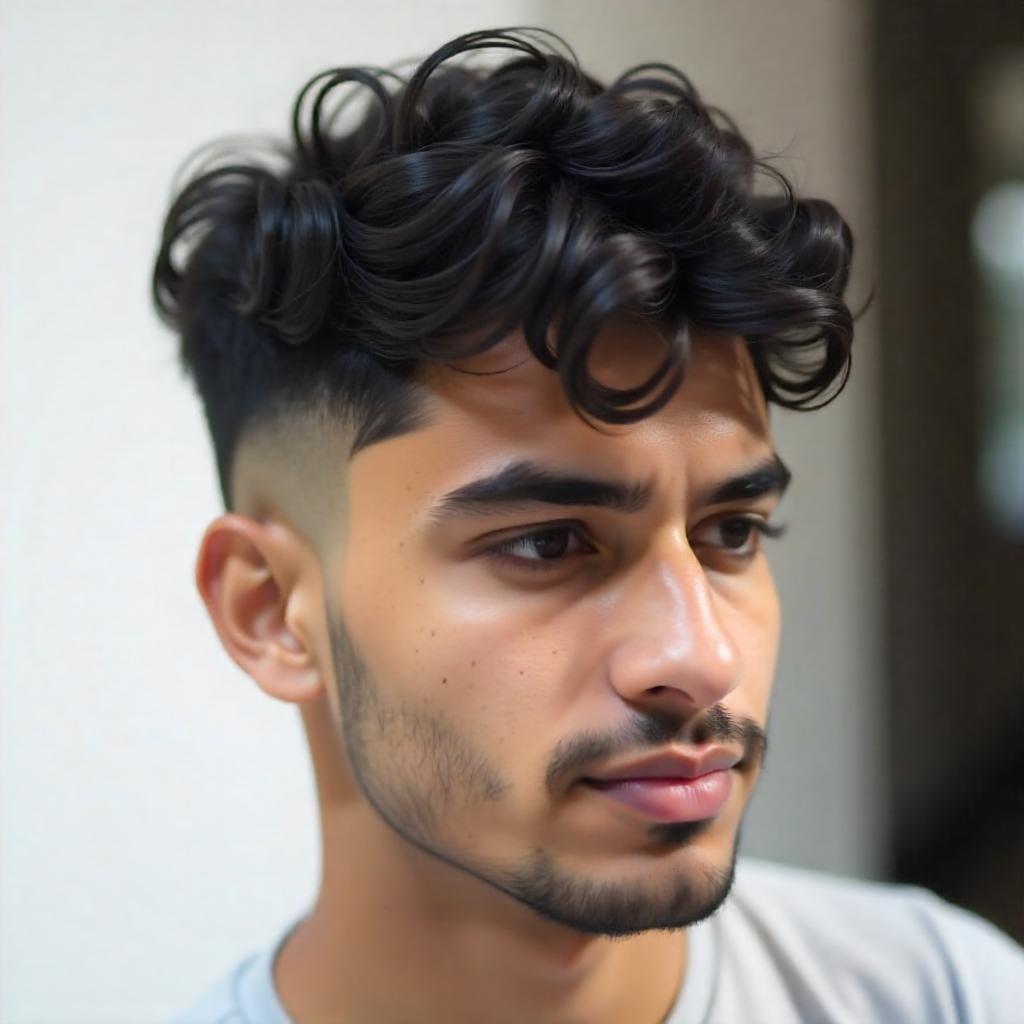
Enhances natural wave definition. Best for oval and round faces. Medium maintenance with wave-enhancing products. Great for casual and trendy looks.
- Low Fade Slick Back Haircut
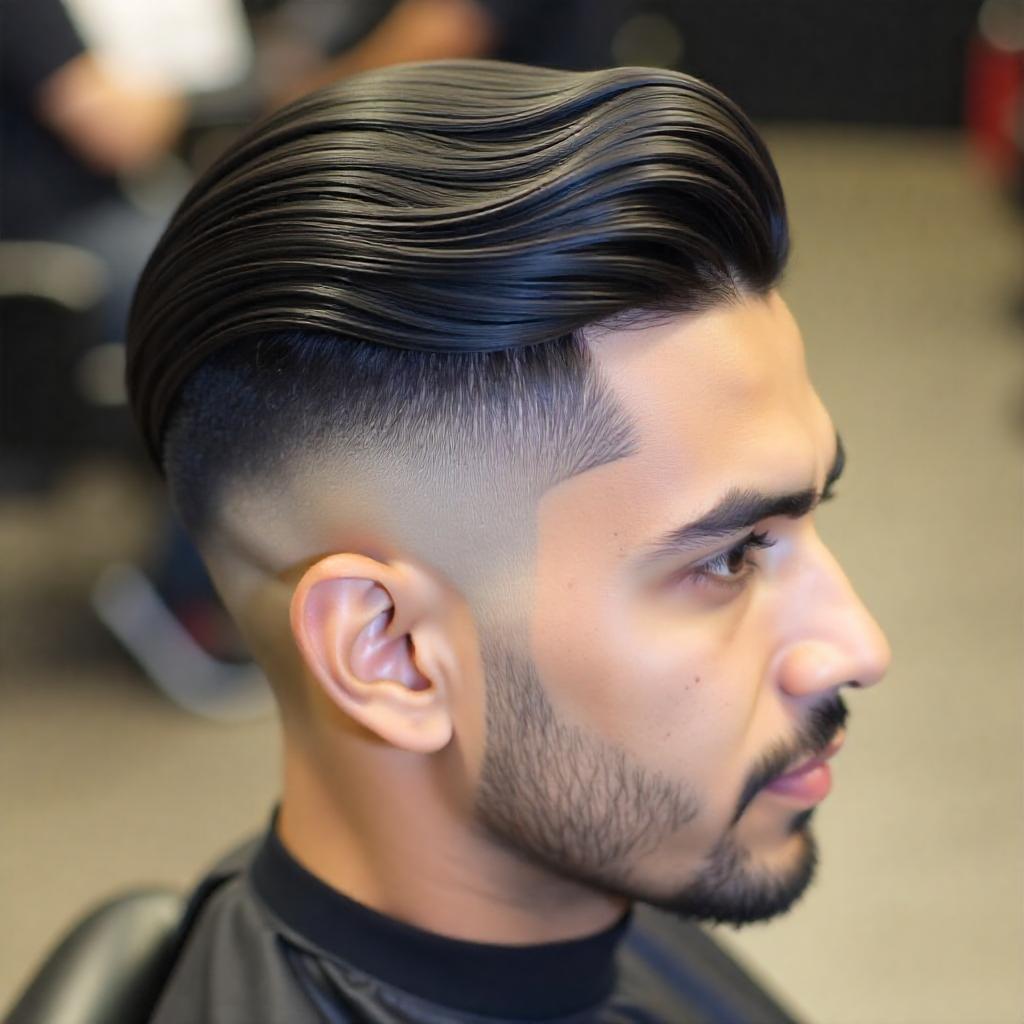
A classic style with brushed-back hair. Best for thick, straight hair. Requires pomade or wax for hold. Ideal for formal and professional settings.
- Low Fade with Pompadour

Adds height and dimension. Best for thick, voluminous hair. High maintenance with daily styling. Perfect for vintage and fashion-forward looks.
- Low Fade with Side Part

A professional, structured look with a deep part. Best for oval and diamond face shapes. Medium maintenance. Suitable for formal and office settings.
- Low Fade with Mohawk

A bold, edgy style with a sharp fade. Best for thick, coarse hair. High maintenance with regular styling. Ideal for streetwear and modern looks.
Maintenance Tips
To keep your low fade sharp and fresh:
- Get Regular Trims: Visit your barber every 2–4 weeks for touch-ups. The lower the fade (especially a skin fade), the faster it grows out and loses its sharpness.
- Keep It Clean: Wash 2–3 times a week with sulfate-free shampoo; condition regularly to keep the top hair healthy.
- Tidy Up at Home: Use a personal trimmer for minor clean-ups around the ears and neckline to extend the life of the fade by a few days.
- Style the Top: Choose the right product for your style: Pomade for high shine and hold (Slick Back/Comb Over), Wax for medium hold and a natural finish (Textured Top), or Clay for a matte finish and strong texture (Pompadour/Quiff).
- Moisturize Your Scalp: Use a light hair tonic or oil to prevent dryness and irritation, especially if you get a Low Skin or Bald Fade.
How to Ask for a Low Fade Haircut at the Barber
To ensure you get the exact cut you want, follow these steps:
- Be Clear About the "Low Fade": Ask for a low fade, specifying that the fade should start just above your ears and gradually blend into the top.
- Specify the Length on Top: State clearly the style and length for the top (e.g., "I want about three inches on top for a textured look," or "I want a classic short crew cut").
- Mention the Fade Type: Decide between a skin fade (down to the skin) or a tapered fade (more natural blend, which typically stays at a grade 1 or 2 at its shortest).
- Show a Reference Photo: A picture is the best way to ensure alignment.
- Ask for Styling Tips: Get product recommendations from your barber specific to your hair type.
Pro Tip: Use words like “clean, sharp, and natural” to guide your barber's technique.
Frequently Asked Questions (FAQs) on Low Fade Haircuts
Here are the most common questions about the low fade, rewritten for clarity:
1. What is the fundamental difference between a low fade and a high fade?
A low fade is a subtle transition where the shortest hair begins just above the ear, offering a professional and balanced look. A high fade starts much higher, near the temples, creating a more dramatic, high-contrast separation between the hair on the sides and the hair on top.
2. Is a low fade a good choice if I have a receding hairline?
Yes, absolutely. The low fade helps to soften the appearance of a receding hairline by drawing the eye down and blending the sides seamlessly. Pairing it with a textured top can also create the illusion of increased fullness in the front.
3. Can the low fade work well with curly hair?
Definitely. A low fade is excellent for curly hair because it keeps the sides neat and structured, preventing the head from looking bulky or triangular. This ensures your natural curls on top are the main, attractive focal point.
4. How can a low fade make my hair look thicker?
The low fade uses contrast to your advantage. By fading the sides down to the skin, the longer hair on top appears denser and fuller by comparison. This makes it a great style for men with fine or thin hair.
5. What are the best ways to incorporate a low fade with a beard?
A low fade is perfectly suited for pairing with a beard. The fade line blends smoothly into your facial hair, creating a clean, well-groomed, and cohesive masculine look. Ask your barber for a tapered beard fade to ensure a seamless transition.
6. Is the low fade suitable for professional or corporate environments?
Yes, the low fade is often considered the most appropriate fade style for professional settings. It offers a sharp yet subtle look. For the workplace, consider styling the top with a neat side part or a slicked-back finish for an extra polished appearance.
7. What other terms might my barber use for a fade haircut?
You might hear the fade referred to using other terms that describe the level or blend:
- Taper Fade: A general term for gradual length reduction.
- Skin Fade or Bald Fade: Indicates the hair is faded completely down to the skin (zero length).
8. Is a low taper fade a good option for men with long hair on top?
Yes, a low taper fade works exceptionally well with long hair on top as it provides a natural and subtle transition. It cleans up the perimeter (neckline and sideburns) without creating a severe contrast, allowing the length on top to remain the focus.
9. Can a Low Fade Haircut Help If I Have a Receding Hairline?
Yes! A low fade can soften the appearance of a receding hairline. By keeping the sides very short and blending them seamlessly, it reduces the visual contrast between the thin temples and the sides. Pairing it with a textured top or sweeping hair forward helps create an illusion of fullness over the hairline.
10. Can I Pair a Low Fade with a Beard?
Absolutely. A low fade blends seamlessly into a beard. Ask for a tapered beard fade to ensure a smooth, professional transition between your haircut and facial hair, avoiding a harsh line.
11. Will a Low Fade Haircut Make My Hair Look Thicker?
Yes! The sharp contrast between the very short, faded sides and the fuller top creates a visual illusion of density, making the top hair appear significantly denser.
12. Are Low Fade Haircuts Appropriate for Professional Settings?
Definitely. It's one of the most professional fade styles because the majority of the fade is hidden below the visible head line. Pair it with a classic top style like a side part or slicked-back look for a polished, corporate appearance.

